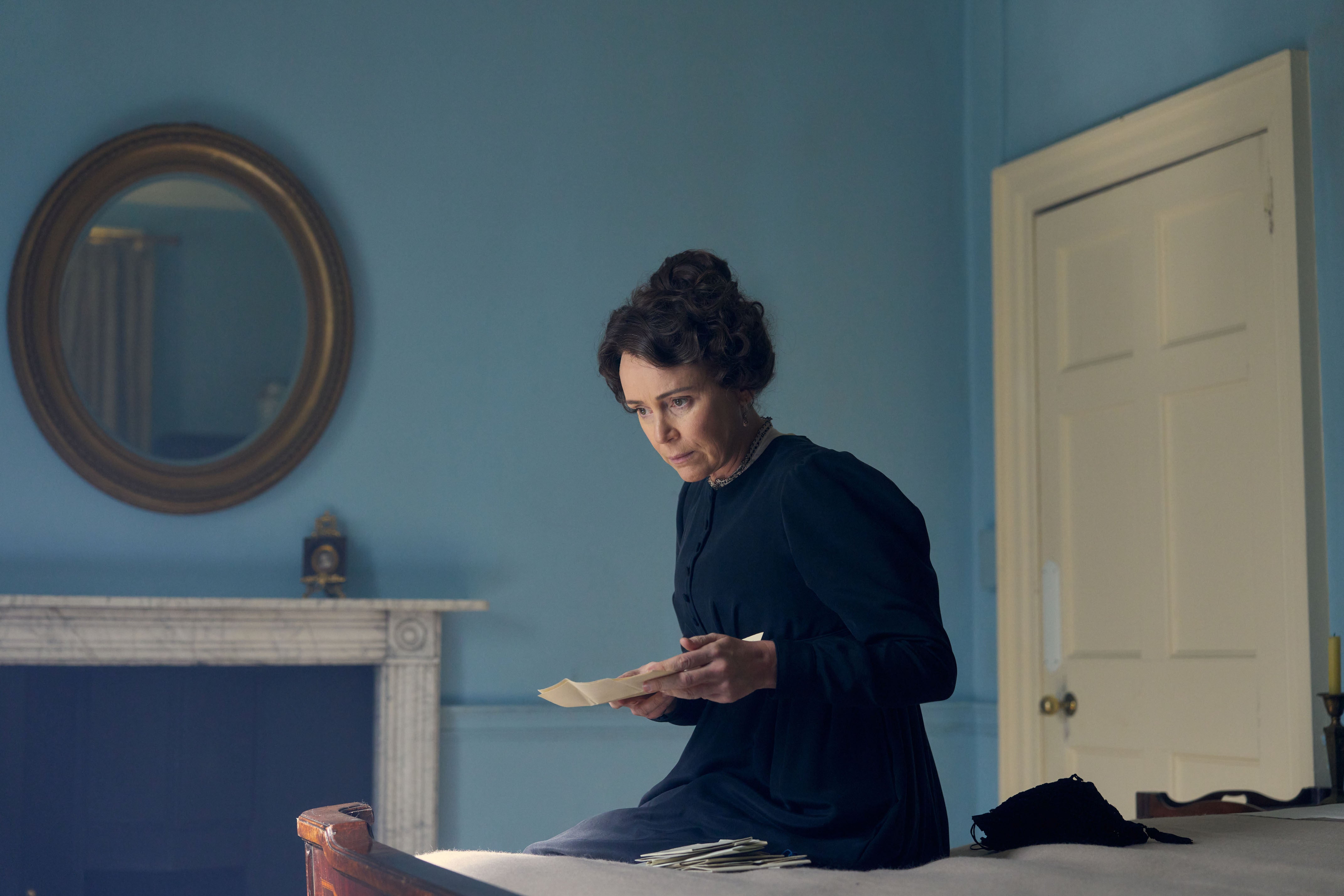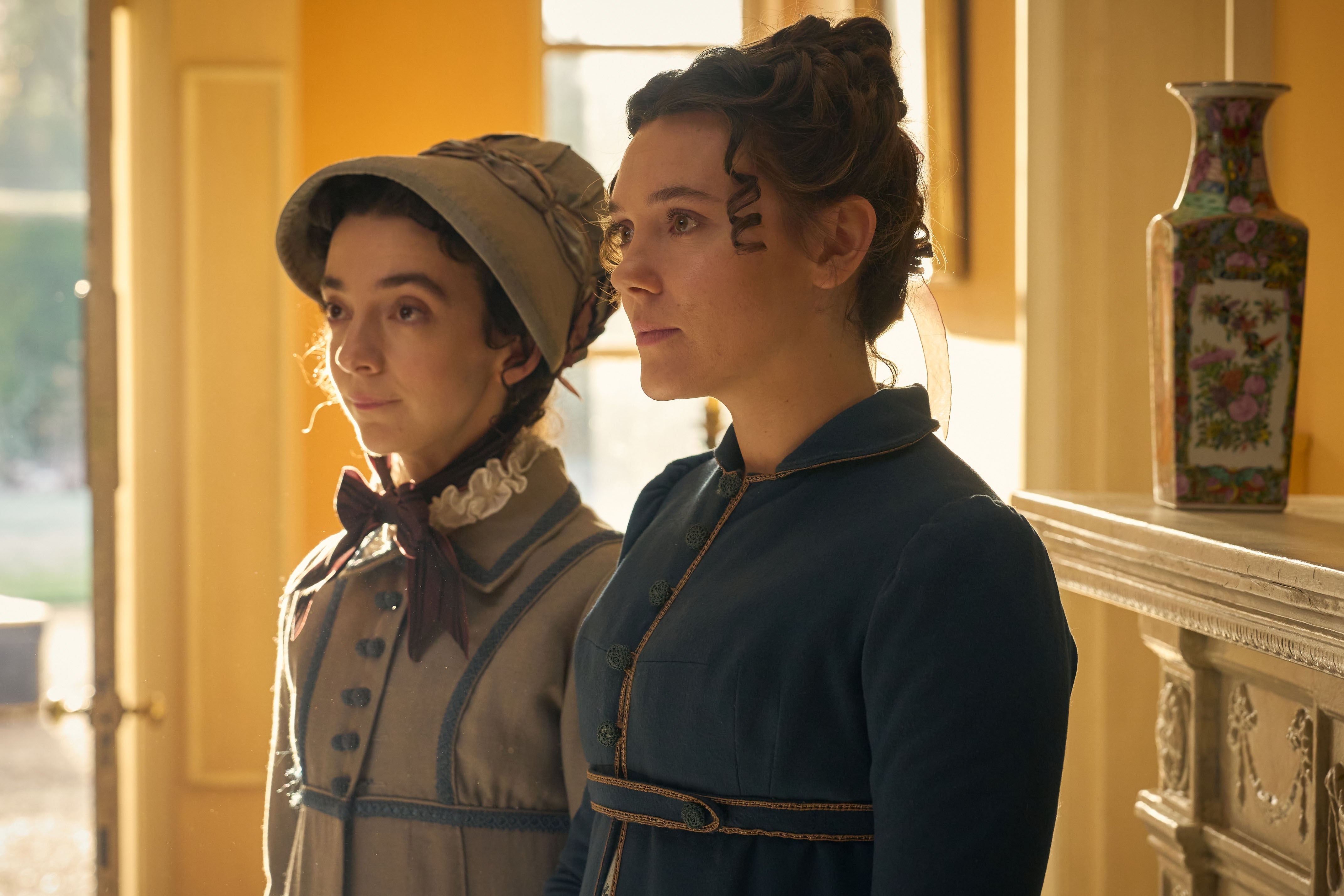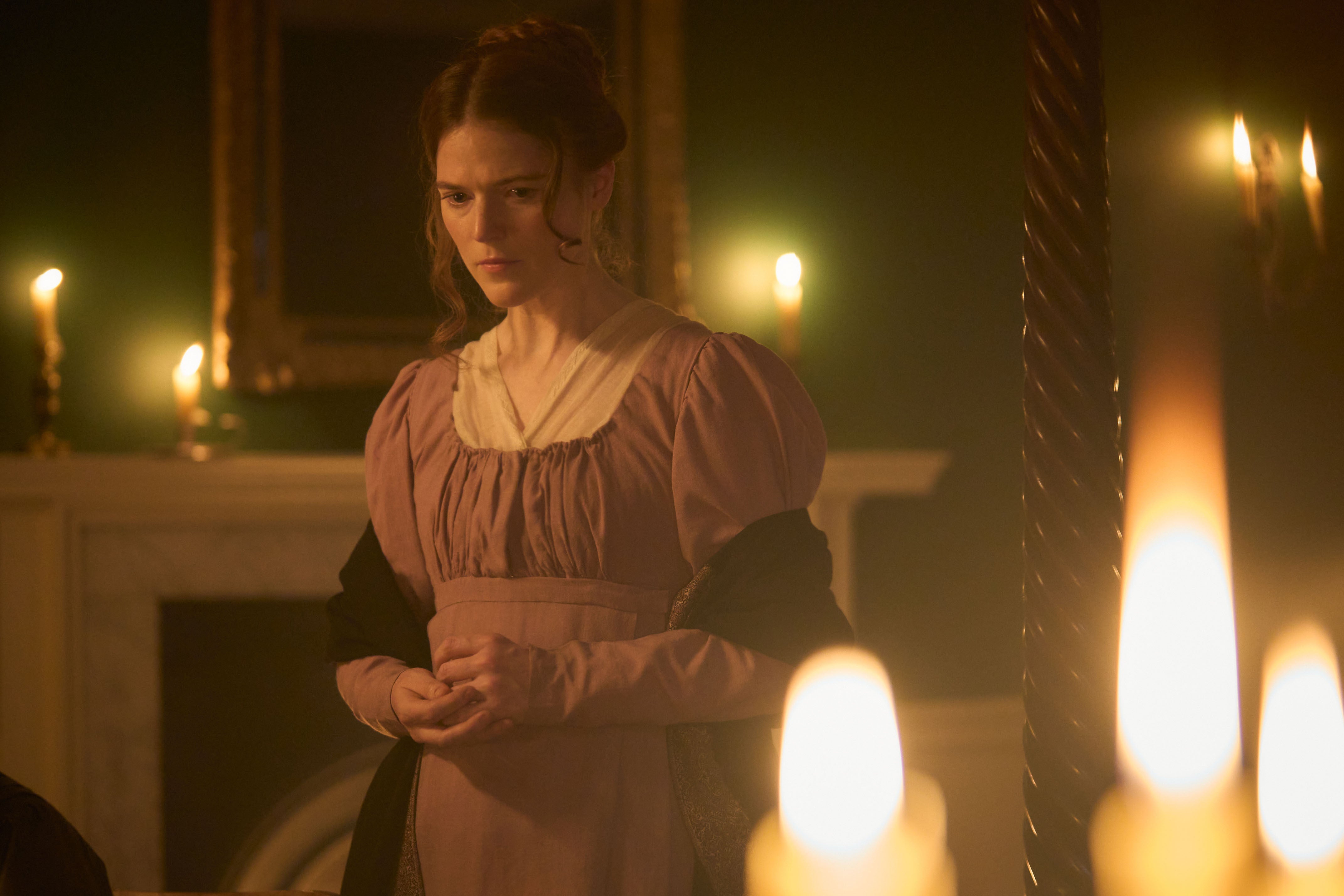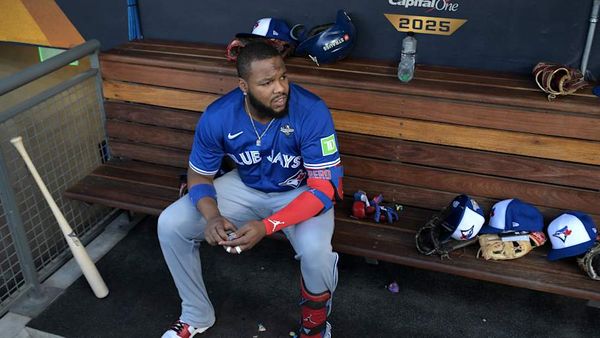Cassandra Austen is one of English literature’s most notorious vandals. Towards the end of her life, in an act of near incomprehensible sabotage, the elder Austen sister burnt swathes of correspondence written by Jane, who had died almost 30 years earlier in 1817. Just 160 letters, out of the thousands Jane is thought to have written, and which together almost certainly would have provided invaluable information about one of our most inscrutable novelists, escaped the flames. This fiery obliteration has become Cassandra’s defining act – and in the subsequent centuries it has left Austen fans and biographers weeping in frustration.
How could Jane’s closest confidante wipe out such a vital part of her writerly legacy, depriving future readers of the chance to better know and understand the woman behind those six exquisite books? What was Cassandra trying to hide? These questions are at the heart of Miss Austen, the BBC’s star-studded, four-part adaptation of Gill Hornby’s bestselling 2020 novel, yet it primarily seeks to understand Cassandra’s actions through the startlingly close bond she shared with her sister. That sibling relationship, which both inspired and enabled Jane’s writing career, is one of the most extraordinarily intimate in all of Western literature. “I think their love for each other [went] above and beyond most people’s,” says Keeley Hawes who plays Cassandra. “It’s quite unusual, I think, that depth of love and devotion.”
Miss Austen, which also stars Patsy Ferran as Jane, alongside Rose Leslie and Jessica Hynes, unfolds in two timelines. In the drama’s present day, set many years after Jane’s death from an undetermined illness at the age of just 41, a middle-aged Cassandra has rushed to the home of her young friend Isabella Fowle (Leslie) after learning that Isabella’s father has just died. The unmarried Isabella is orphaned, adrift and on the verge of losing her home – yet Cassandra’s motives are not entirely altruistic. Isabella’s late mother Eliza was an intimate of the Austen siblings, and exchanged countless letters with Jane.
These missives, teeming with gossip, intrigue and the author’s sharp, unrelenting wit, are hidden away in the Fowle household. Yet as Cassandra sorts through this secret cache, she is transported back to her earlier life with Jane. Crucially the letters serve as a conduit for the viewer to understand not so much Jane but Cassandra, who throughout history has often been written off as a more dutiful and staid, even dull, foil to her sparkling younger sister.
We see the younger Cassy, played by Synnøve Karlsen (so uncanny is Karlsen’s likeness to Hawes that the pair previously appeared as mother and daughter in Sky’s The Midwich Cuckoos), full of vitality and also deeply, movingly in love with her fiancé, Isabella’s uncle, the dashing Tom Fowle (Calam Lynch). “As Cassy reads the letters, a part of her own life is uncovered,” says director Aisling Walsh. “She starts to see what people thought about her, how Jane felt and knew that [Cassy] was in love.” Particularly poignant is Jane’s anticipation of her impending separation from Cassy after her marriage – “I cannot welcome it but I suppose I must bear it” – not least because, in the end, it was Cassy who had to live on for decades without her dear sister.

They were not only sisters but best friends, life companions and possibly the loves of their lives
The cleverness of the original book, and the adaptation, is that it presents Cassandra’s story with all the wit, verve and wry observation we have come to associate with Jane Austen herself. “It’s like the seventh Austen [novel]... It feels like an extension of the canon,” says Hawes. “That’s what's lovely about it – it has all the elements of an Austen.” Cassy’s love affair was tragically short-lived: a year after their engagement, Tom died of yellow fever in the West Indies in 1797, leaving a still painfully young Cassy determined to honour his memory by never marrying again. Of Jane’s six novels, her story is perhaps closest to Persuasion, its romance undercut by a quiet grief and heightened awareness of what might have been.
But the greatest love story of all is arguably that between Cassy and Jane. “They were not only sisters but best friends, life companions and possibly the loves of their lives,” says Ferran, who imbues the author with both energy and pathos. Jane was almost three years Cassy’s junior, and as the only two young girls in a household full of boys – not just the six Austen brothers, but also the male pupils taught by their father, the Reverend George, at the vicarage in Steventon, Hampshire – it’s hardly surprising that they forged a close alliance from an early age.
Yet as the Austen sisters entered adulthood towards the end of the 18th century, “the expected future would have been that they would’ve met somebody and got married, probably somebody the family knew”, says Walsh. Fowle, who had been one of the Reverend Austen’s students at Steventon, and was a close friend of the family, was a solid match for Cassandra. In Miss Austen, screenwriter Andrea Gibb imagines Jane’s mixed emotions as the preparations for her beloved sibling’s wedding take over the house at Steventon. “I cannot quite remember how we passed our time in the days before my sister’s engagement,” we hear Ferran remark in a waspish voiceover. “There was an interesting tension that existed within Jane: to see Cassandra flourish in her own life, independent of Jane, while also wanting to keep Cassandra selfishly to herself,” Ferran says.

It’s no wonder that Jane’s happiness on her sister’s behalf would have been tinged with anxiety. Marriage would have irrevocably altered the duo’s dynamic, while motherhood would almost certainly have absorbed Cassy’s attention. What’s more, Jane, who preferred to keep herself “in the periphery of society, all the better to observe and study the way humans function and behave”, as Ferran puts it, would have been expected to follow her sister down the aisle. And had she done so, she would have almost certainly sacrificed her writing as a result.
It’s one of the central ironies of the author’s life: if she had spent more time seeking out her own real-life love story, she might never have left us with some of literature’s most enduring romances. “It’s intriguing to me that a single woman who seemingly chose spinsterhood can invest so much of her imaginative energy into writing about love and giving her characters those happy endings that they so desperately want,” Ferran says. “I find that both admirable and sad for some reason. It makes Jane Austen feel more human to me.”
Of course, Cassy was soon to become “a spinster” too. In vowing to never marry anyone but Tom, Cassandra wasn’t just staying true to her late fiancé’s memory: she was also choosing her sister. “Her life’s work became supporting Jane and enabling Jane,” Walsh explains. When the Austen sisters later moved into a small cottage in the grounds of their wealthy brother Edward’s estate in Chawton, Hampshire, Cassandra took over the running of the house so that Jane could devote more of her time to her work. “She had managed to find somewhere that was comfortable and safe to write, and so [Jane] wrote most of her novels in that house.”
Her life’s work became supporting Jane and enabling Jane
In the series we see Jane reading her work in progress aloud, to her sister’s delight; you wonder whether this habit helped hone that effervescent dialogue. “You have this beautiful image of them being each other’s sounding board,” says Leslie. “And of Cassy directing Jane with ideas and opinions, which I think is lovely.” Their enjoyment can only have been enhanced by the fact that Jane frequently drew inspiration from the Austens’ social circle. Indeed, it’s hard not to see the parallels between Hynes’ dour Mary, their sister-in-law, and Pride and Prejudice’s Mary Bennet, with her “pedantic air and conceited manner”.
Yet their freedom – be it financial or creative – is fragile and tentative. The home at Chawton was provided by their brother. Before this act of generosity, the sisters and their widowed mother had shuttled between rented accommodation and visiting family. For all their respectability, their lives as unmarried women were still precarious. Walsh says she wanted to create settings that felt “worn and lived in”, rather than stuffing the rooms with period ephemera, a reminder that the family “are church people … they’re not vastly wealthy”. And before filming, Hawes spoke to Hornby about “how we read [Austen’s] books very differently now”, with “the romantic aspect more at the fore, but actually, at the time, there was real drama to their situations”.

The sense of “jeopardy for women”, Hawes observes, “was huge”. Rejecting a marriage proposal – as Jane did several times – meant gambling with your future security. Think Elizabeth Bennet turning down the overtures of the slimy Mr Collins in Pride and Prejudice – only for her friend Charlotte Lucas to quickly accept him, “solely from the pure and disinterested desire of an establishment” (surely one of the most depressing, if pragmatic, turns of phrase in Austen’s output). And a relative’s death might leave you “out on the street”, Hawes adds.
And yet, if Miss Austen shows us anything, it’s that these two women managed to live incredibly rich lives in spite (or perhaps because) of their single status. There is a tendency, when it comes to Austen, Leslie observes, to assume “simply because she never married, she was unlucky with love. But of course, the love that she and her sister shared was beyond anything. One assumes that Jane required little beyond that, because they were such a force together”.
When we read Austen, the temptation to fill in the gaps in her life story can be strong. “There always seems to be intrigue and curiosity about who the artist is,” Ferran says. But Jane was a deeply private person. As Walsh points out, “her first novel was simply published ‘by a Lady’ – her name was never mentioned”.
In fact, she wasn’t revealed as the author of her works until after her death. At this point the public’s fascination with Jane Austen started to grow. Miss Austen shows Cassandra as desperate to protect her sister’s secrets and the world they shared from prying eyes. There’s a telling scene in episode one where an unctuous (and very Collins-esque) clergyman, who professes to be a huge fan of “Mansfield House”, suggests that Jane’s genius “warrants a substantial biography”. Cassandra, ever keen to preserve her sister’s privacy, deftly brushes this off by stating that “everything one needs to know about Jane Austen is to be found within the pages of her novels”. Of course, with an irony that doesn’t go unacknowledged by the makers of Miss Austen, this plea is also couched within a TV drama that feeds the same Austen industry of which Cassandra was so wary.
Seen from this angle, perhaps Cassandra’s decision to burn those letters seems like less of a destructive act, more of a loving one. Would a sister so supportive of her sibling’s literary efforts go against Jane’s own wishes for her archive? “I think [Cassandra] took her work incredibly seriously, and she was a wonderful custodian,” says Hawes. She would, the actor adds, “have protected [Jane] at all costs”. It’s hard to begrudge her for that.
‘Miss Austen’ is on BBC One and BBC iPlayer from 2 February at 9.05pm







